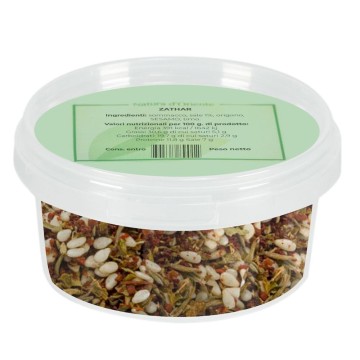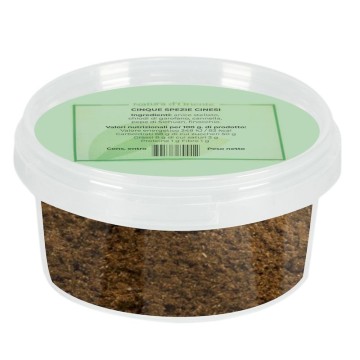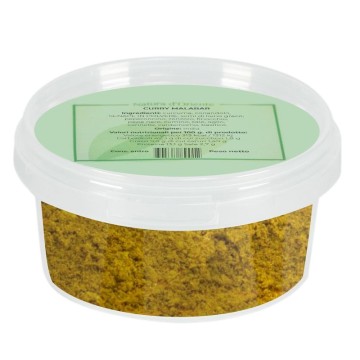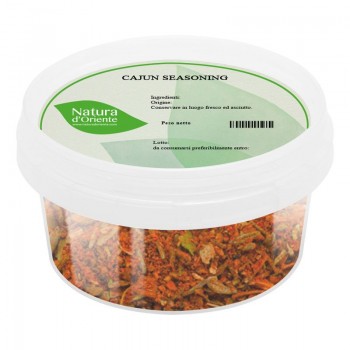This complex and aromatic combination of spices comes from India and its name literally means "hot spice". It seems that the blend was originally used to better deal with the winter cold, by toasting the seeds; later it quickly spread for its pungent and spicy taste. It is now a basic element of traditional Indian and Pakistani cuisine, with an original recipe that includes a mix of at least 6 spices, which represent the 6 tastes. In fact, it is believed that Garam Masala contains a balance of the main flavors, including spicy heat and sweetness, sourness, salty notes, bitter, a hint of floral nuances.
Since the recipe of Garam Masala is flexible, variations of shades and flavors like the one we propose are quite common. Seven different spices to complete the aromatic and flavor profile of the blend: cinnamon, cumin, nutmeg, coriander, cardamom, black pepper, cloves. When combined, they create a mix that adds incredible depth and complexity to dishes and even drinks. A classic is Garam Masala Chai, a spicy, invigorating and warm Indian black tea that is perfect for fighting the cold. In addition to being a pleasure to eat, this combination has benefits that help blood circulation, fight bad breath, and act through antioxidants to slow down the aging process. The spices have digestive properties, promoting proper gastrointestinal transit of food, and metabolism.
The spices contained in Garam Masala
This blend combines 7 ingredients, for a complexity that includes a variety of flavors.
Nutmeg provides a warm, exotic flavor with pungent notes and a sweetish aftertaste. The citrus nuances pair well with cloves, cinnamon and coriander.
Coriander evokes aromas and flavors reminiscent of citrus, dill and fennel, tending towards the scent of pine needles. The sweet but fresh tone complements other deeper and more bitter spices.
Cloves infuse a warm flavor, sweet and slightly spicy notes; they give a delicate touch with the aftertaste leaning towards fruitiness and with floral hints.
Cumin adds a spicy and pungent but overall delicate taste, reminiscent of fennel. Its warm aroma gives Garam Masala slightly toasted notes.
Cardamom brings an exotic flavor between pungent and sweet, with floral notes. The balsamic scent recalls citrus, eucalyptus and honey.
Black pepper enhances the strong flavor of the blend, with a strong aroma, although not too spicy; peppery notes give depth, which teases the palate.
Cinnamon is the element that fixes a unique sweet and pungent taste in the mixture, with an intense aroma and pleasant peppery notes.
Use of Garam Masala in cooking
In the tradition of Indian cooks, spices are toasted and ground, to obtain a unique and tasty blend. Garam Masala powder, therefore, responds to this need for heat with toasted notes but not too much, and is usually not too spicy since it harmonizes the flavors and aromas. As with many spice mixes, the goal is to obtain the right balance of flavors. Unlike other spice mixes that are added before cooking, Garam Masala is traditionally added at the end, to give a stronger "sensory hit" to the dish. Sometimes it is placed on the table to be used differently by each diner. You can, however, incorporate the mixture at any time during preparation. If you use it at the beginning of cooking, it is best to sprinkle it at the end to give a burst of flavour to the dish, which infuses warmth. Sprinkling a small amount during cooking, on vegetables and greens, can also be enough. A dish with many ingredients can become overwhelming when you add Garam Masala, especially if it contains potatoes, cauliflower, carrots, spinach and peas. Another way to use Garam Masala in cooking is to cook it in oil, which releases all the flavours of the spices. The aromatic oil will be used in the recipe, creating a rich base. Alternatively, you can mix Garam Masala with a little oil without heating it, to marinate vegetables before cooking. The powdered version of Garam Masala is convenient for being able to flavour dishes immediately, without having to toast the individual spices. Grinding makes the mixture on hand, ready to add fragrance and flavour without the humidity. Its fine consistency allows it to be used to sprinkle dishes evenly, and also create pleasant visual effects with its color. Be careful with the quantity, Garam Masala is very tasty, so you only need a small amount. Otherwise the dish will be particularly pungent.and can overpower other flavors. Savory recipes: The blend is ideal for flavoring roasted and boiled vegetables, legume soups, cereals, rice dishes. It adds a touch of heat to soups and broths, a spicy note to eggs and potatoes. Garam Masala spices are often found in pumpkin dishes, from soup to roasted pumpkin. Meat and fish: Most Garam Masala spices are excellent on chicken, pork and other types of white meat. In Western cuisine, it is also used to flavor roasts, stews, casseroles and stir-fries. A pinch of Garam Masala is sprinkled on fish, soups and seafood to add a spicy and savory note. Ethnic cuisine: It is a popular seasoning in traditional Indian dishes, where it is historically sprinkled on food immediately before eating or roasting it – to maintain the spiciness during cooking. Some recipes combine the ground spices with water, coconut milk or vinegar to create a seasoning paste. It is also common to add other ingredients to Garam Masala, such as onion, garlic, or nuts. It can be cooked with onions as the base of a curry or soup. Sauces and Marinades: It is a well-rounded blend of flavors that can marinate meat, fish, or vegetables. It can be part of a seasoning for meat before grilling, used as a spice for spreads, and spicy dips for salads, rice, and vegetables. Baking: Garam Masala blend can be used to season bread, cookies, gingerbread, and apple pie. Garam Masala also works on plain bread, especially crusty bread. Desserts: It is used in traditional desserts such as pumpkin pie and apple pie. A pinch of Garam Masala can be added to pie crusts or to bundt cake and shortbread dough. You can sprinkle the blend on roasted pears with brown sugar, and in yogurt to add a tangy touch to the tart base. Beverages: This aromatic blend can infuse warmth, flavor, and a hint of exoticism into beverages, from tea (Garam Masala Chai) to coffee and other hot or cold drinks. One recipe calls for simmering milk and water, along with black tea leaves and a pinch of Garam Masala. You can stir the mixture into freshly brewed coffee, add it to regular lemonade, smoothies, hot chocolate or add a tasty kick of heat to cocktails.
Aloo Gobi – Potato and Cauliflower with Garam Masala
Ingredients: - 2 medium potatoes, sliced or diced - 1 medium cauliflower, cut into small florets - - 2 medium tomatoes, chopped (or pulp) - 1 medium onion, finely chopped - 1/2 teaspoon cumin seeds - 1.5 teaspoons ginger-garlic paste - 1/2 teaspoon turmeric powder - 1/2 teaspoon dried mango powder (amchur) - 1/4 teaspoon red chili powder - 1/4 teaspoon garam masala powder - 1 teaspoon coriander powder - 3 tablespoons extra virgin olive oil - 2 tablespoons coriander minced - salt to taste.
Preparation
Heat 2 tablespoons of oil in a non-stick pan over medium heat. Add the cauliflower florets and fry for 2-3 minutes and then add the potatoes. Fry over medium-low heat for about 8 minutes, until the potatoes and cauliflower are dark brown. Drain on tissue paper and set aside. In the same pan, heat 1.5 teaspoon of oil over medium heat, add the cumin seeds and let them brown for a few seconds. Add the onions and cook for 2 minutes until translucent.
Add the ginger-garlic paste and cook for another 2 minutes, until the aroma spreads. Add the chopped tomatoes and cook for 2 minutes to soften. Add turmeric powder, ground red chili, coriander powder and amchur (mango powder). Cover the pan and cook for 2-3 minutes, then add the reserved potatoes and cauliflower. Add the chopped coriander leaves and mix well. Add Garam Masala and then cook the potato and cauliflower on medium-low heat for 5-6 minutes. Season with salt, cover the pan and cook for another 6-7 minutes on low heat, or until the potatoes and cauliflower are tender. To prevent the masala from sticking to the pan, add a little water - 1 tablespoon at a time and only enough to cook the vegetables. Once cooked, garnish with more coriander leaves and serve the Aloo Gobi hot.
Origin and history of Garam Masala
We know that spices are the fundamental part of Indian cuisine, and one of the common mixes in many Indian recipes is precisely this Garam Masala. It comes from northern India but is also very widespread in the south of the Indian subcontinent. Usually the most basic Garam Masala contains a mixIt is made of 6 or more spices, but can also be combined with over 30 ingredients. Today there are numerous variations, not only by region, but also by family. The many Garam Masala mixes are always designed to include the main flavors, in a complete way. In some mixes the spices are carefully blended to obtain a perfect balance between all the various flavors, while in others, one flavor might be emphasized over all the others, creating a particular tone, which stands out among the myriad of complementary tastes. Outside of India, Garam Masala is a popular ingredient in Pakistani dishes, and is also gaining popularity in Western cuisine as a particular type of “curry” powder. The difference with curry powder is that garam masala usually does not contain turmeric, one of the main ingredients of yellow-hued curry. Above all, garam masala is usually used as a final seasoning in a dish, mixed at the end of cooking, while curry is used before. Perhaps its best-known use is in chicken dishes or “curries,” but it is used in nearly all types of Indian cuisine. Popular recipes include Chana Masala (a vegetarian stew with creamy chickpeas in a tomato sauce), Tikka masala chicken (roasted chicken marinated in spices and a creamy curry sauce), and Indian Butter Chicken (tandoori chicken in a spicy tomato sauce). Some recipes call for specific modifications or alterations, such as mixing in the spices and herbs (garlic, onion, etc.). Other recipes call for the spices to be ground with liquid ingredients (water, coconut milk, or vinegar) to create a seasoning paste. In addition to its popularity in cooking, garam masala also has a history in traditional Ayurvedic medicine. It has been used for centuries as a natural remedy to treat and promote overall good health.




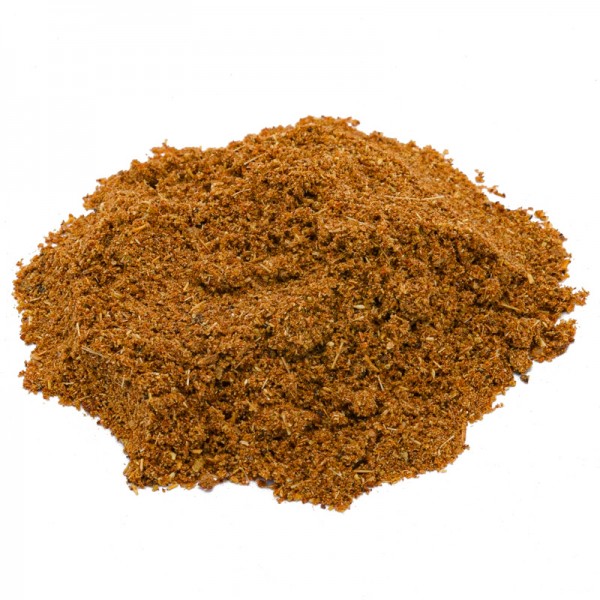




 No reward points for this product.
No reward points for this product.

